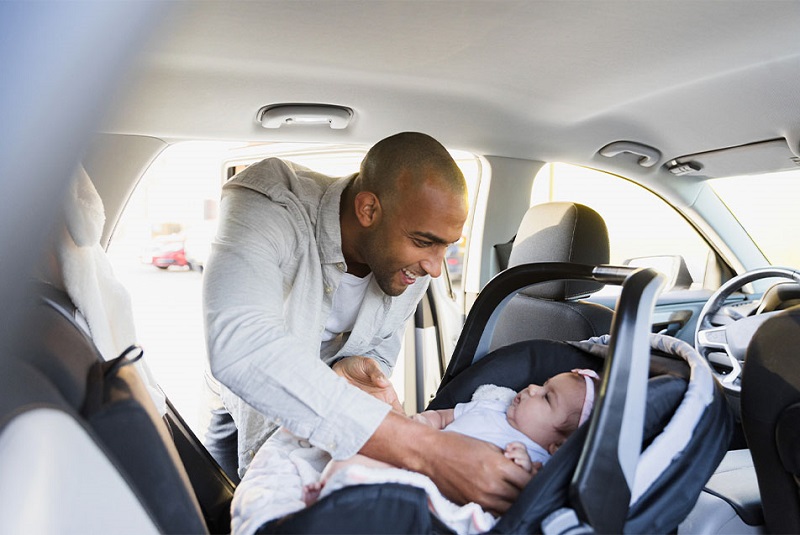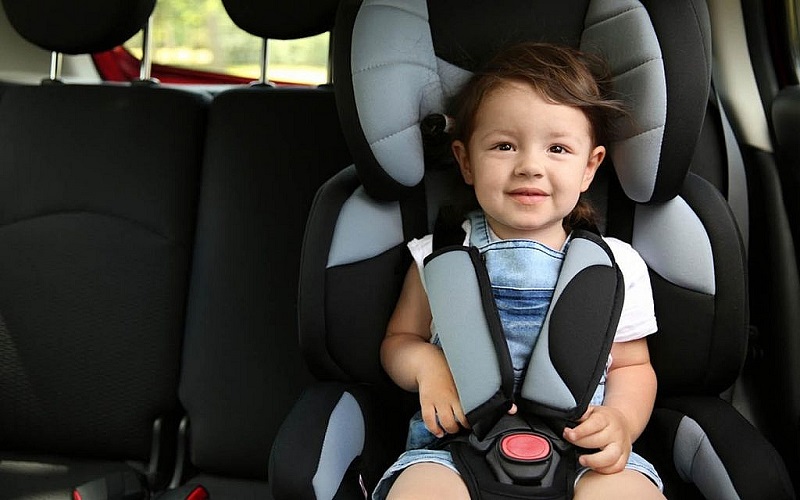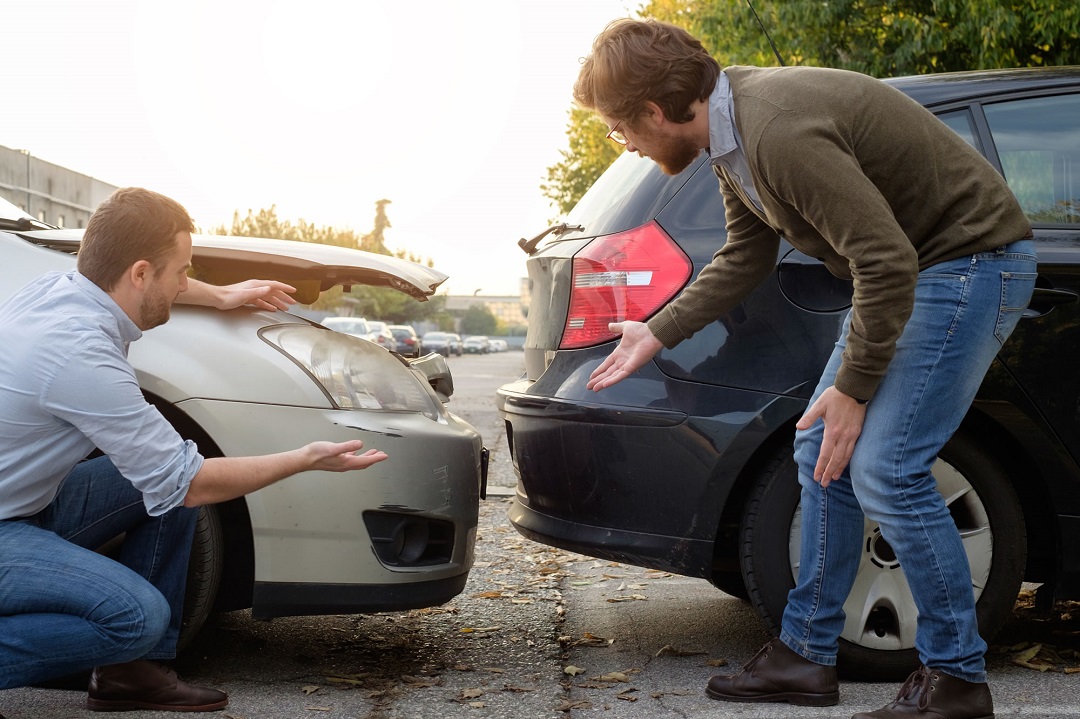Hey there, fellow parent! If you’re reading this, it’s because you understand that your child’s safety on the road is a top priority. Whether you’re a seasoned pro or a newbie in the parenting world, driving with your little one can be both a joy and a challenge. But worry not, because I’ve got some practical tips and advice to help you navigate the road safely with your precious cargo.
1. Buckle Up, Every Time
Let’s start with the basics – seat belts. You already know that they’re essential for adults, but they’re just as crucial for your child’s safety. Ensure that your child is securely fastened in an appropriate car seat or booster seat, depending on their age, height, and weight. Always double-check the seat’s harness and buckle before hitting the road.
2. Choose the Right Car Seat
Now, choosing the right car seat might seem like a daunting task with so many options out there. But think of it as finding the perfect pair of shoes – they need to fit comfortably. Make sure your car seat is suitable for your child’s age, weight, and height. And remember, children should ride in a rear-facing car seat for as long as possible, usually until they reach the maximum height or weight limit set by the manufacturer.
3. Install Car Seats Properly
Your child’s safety depends on how well you install the car seat. Read the car seat manual and your vehicle’s owner’s manual thoroughly. Follow the instructions step by step. If you’re uncertain, many fire stations, hospitals, and police departments offer free car seat installation checks. Don’t hesitate to get professional help if needed.
4. Keep the Back Seat Safer
Here’s a simple rule to remember: the back seat is the safest seat for your child. In fact, it’s recommended that children under 13 should always ride in the back. Airbags in the front seat can be dangerous for little ones, so keep them in the rear-facing position until they’ve outgrown it.
5. Avoid Bulky Clothing
During chilly weather, it’s tempting to bundle your child up in layers of warm clothing. However, this can affect the effectiveness of the car seat harness. Thick clothing can create a gap between the harness and your child’s body, making it less secure in case of an accident. Instead, dress your child in thin layers and use a blanket over the harness if needed.
6. Minimize Distractions
Driving with kids can be distracting, but it’s crucial to stay focused on the road. Try to plan your trips during your child’s naptime or when they’re generally calm. Keep toys and snacks within reach to minimize the need to turn around or take your eyes off the road. Engage in conversation to keep them entertained without taking your attention away from driving.
7. Rest Stops and Breaks
Long journeys can be tiresome for both you and your child. Plan regular rest stops to stretch your legs, use the restroom, and let your child move around. This not only ensures their comfort but also helps you stay alert and focused on the road.
8. Secure Loose Items
Anything loose in your car can become a projectile in the event of sudden braking or a collision. Ensure that all items, from groceries to sports equipment, are properly secured. Consider using a cargo net or barrier to keep things in place.
9. Set a Good Example
Children are like sponges; they soak up everything they see. So, be a role model when it comes to road safety. Always wear your seatbelt, follow traffic rules, and avoid risky behaviors like texting while driving. Your child will learn from your actions.
10. Be Prepared for Emergencies
Accidents can happen, and it’s essential to be prepared. Have a well-stocked first-aid kit in your car and know how to use it. Make sure you have emergency contact numbers, insurance information, and a charged cell phone with you at all times. Being prepared can make a world of difference in a crisis.
11. Educate Your Child
As your child grows, take the time to teach them about road safety. Explain the importance of seat belts, why they need to stay seated, and how to cross the road safely. This knowledge will stay with them as they become more independent.
12. Don’t Give in to Tantrums
Kids can throw a tantrum at the most inconvenient times, like when you’re driving. It’s tempting to give in to their demands to keep them quiet, but it’s crucial to stay firm and not compromise on safety. Pull over if necessary to address their needs.
13. Stay Patient
Let’s face it; kids can be challenging passengers. They might get fussy, ask a million questions, or even argue. Stay patient and maintain your composure. Yelling or losing your temper can be distracting and dangerous.
14. Childproof Your Vehicle
Just like you childproof your home, you should childproof your car. Ensure that there are no small objects within reach that your child could choke on. Cover electrical outlets, secure cords, and remove any potential hazards.
15. Use Sunshades
Bright sunlight can be uncomfortable for your child, especially on long rides. Invest in sunshades for the car windows to keep the sun out of their eyes and protect their delicate skin from harmful UV rays.
16. Never Leave Your Child Alone in the Car
This one might seem like a no-brainer, but it’s worth emphasizing. Never, under any circumstances, leave your child alone in the car, even for a minute. Cars can heat up rapidly, posing a severe risk of heatstroke or other dangers.
17. Get Regular Maintenance
Keeping your vehicle in tip-top shape is essential for your child’s safety. Regularly service your car to ensure brakes, tires, and other critical components are in good condition. A well-maintained vehicle is less likely to break down on the road.
18. Understand Car Safety Features
Modern cars come equipped with a range of safety features. Take the time to familiarize yourself with these features, such as adaptive cruise control, blind-spot monitoring, and lane-keeping assist. They can provide an extra layer of protection for you and your child.
19. Stay Informed About Recalls
Manufacturers occasionally issue recalls for car seats and vehicles due to safety concerns. Stay informed by registering your car seat and regularly checking for recalls. If a recall is issued, follow the manufacturer’s instructions for replacement or repair.
20. Don’t Drive Distracted
Distracted driving is a significant risk on the road. Avoid using your phone, eating, or engaging in other distracting activities while driving. Your child’s safety depends on your undivided attention.
FAQs
- When can my child transition from a rear-facing car seat to a forward-facing one?
The American Academy of Pediatrics (AAP) recommends keeping your child in a rear-facing car seat until they reach the maximum height or weight limit specified by the car seat manufacturer. This is usually around 2 years old or more. It’s essential to follow the specific guidelines provided with your car seat.
- Can I use a second-hand car seat for my child?
While it’s generally not recommended if you choose to use a second-hand car seat, make sure it meets current safety standards, has never been involved in an accident, and is not past its expiration date. Additionally, check for any recalls associated with that particular car seat model.
- How do I know if my child is ready for a booster seat?
Your child is ready for a booster seat when they have outgrown the weight or height limits of their forward-facing car seat, usually around 4 to 7 years old. The exact age and weight vary depending on the car seat manufacturer’s recommendations. Your child should also be able to sit with their back against the vehicle seat and knees bent at the edge of the seat without slouching.
- What’s the safest spot for a car seat in the back seat?
The middle of the back seat is often considered the safest spot for a car seat because it’s farthest from potential side impacts. However, this may not be practical for all vehicles. As long as your child is securely and correctly restrained in the car seat, any rear seat position is safe.
- Are aftermarket car seat accessories safe to use?
It’s generally recommended to avoid using aftermarket car seat accessories, such as padded seat covers, harness strap covers, or headrest attachments. These accessories may interfere with the proper functioning of the car seat and compromise safety. Stick to the manufacturer-approved accessories that come with the car seat.






